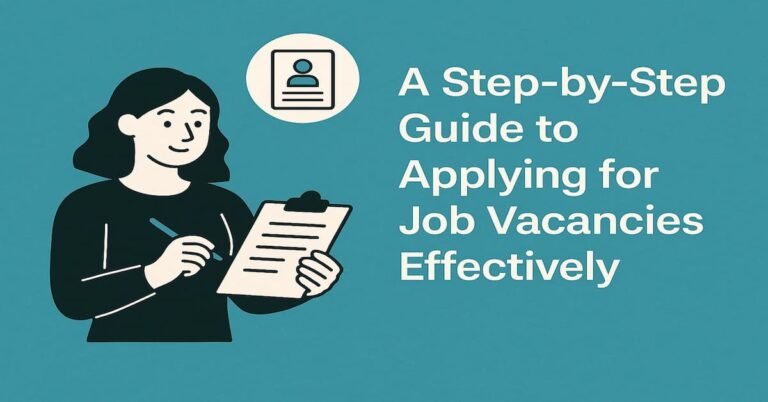Remote work from home isn’t just a pandemic stop-gap anymore—it’s a full operating model. Employers are redesigning processes, policies, and tech stacks to support distributed teams, while workers chase flexibility, better focus time, and wider job markets. This guide examines whether remote work from home is the future of employment, the models emerging, and how to prepare—so you can make smart, sustainable moves in 2025 and beyond.
What “Remote Work From Home” Really Means in 2025
“Remote work from home” covers fully distributed roles (no office) and hybrid arrangements with home-first workflows. The core shift is from “place-based” control to “outcome-based” accountability. Instead of presence, teams manage through written plans, measurable goals, and transparent dashboards. That’s why documentation, asynchronous communication, and security hygiene sit at the heart of effective remote work from home programs.
Why Remote Work From Home Keeps Growing
Three flywheels keep turning:
- Talent access: Companies can hire specialists anywhere, not just within commuting distance. Remote work from home massively widens both supply and demand.
- Cost and resilience: Distributed teams reduce office overheads and increase continuity during disruptions.
- Worker preference: Professionals value flexibility, deep work, and the ability to design life around outcomes—making remote work from home a compelling differentiator in competitive labor markets.
The 3 Work Models Competing for the Future
1) Fully Remote (Home-First)
- Definition: Teams designed for async, documentation-led collaboration; offices (if any) are optional hubs.
- Strengths: Access to global talent, fewer coordination costs, deep focus, inclusive for caregivers and people outside major cities.
- Risks: Isolation, miscommunication in text, uneven home setups, and security drift if guardrails are weak.
2) Hybrid (Flex-Location)
- Definition: Some days at home, some on-site; often team-set rules.
- Strengths: In-person trust building while keeping remote work from home benefits for focus work.
- Risks: Two-tier culture if policies favor office presence; calendar chaos if teams don’t commit to shared rituals.
3) On-Site (Office-Centric)
- Definition: Presence is the default; remote is rare or temporary.
- Strengths: Serendipitous collaboration, on-the-spot mentorship for juniors.
- Risks: Limited talent pool, commuting fatigue, and potential disengagement among candidates who prefer remote work from home flexibility.
Benefits of Remote Work From Home—for Employers and Talent
For organizations
- Broader hiring funnel: More diverse pipelines and specialized skills.
- Throughput and focus: Fewer interruptions, tighter briefs, and faster iteration when async is mastered.
- Resilience: Distributed infrastructure and knowledge bases reduce single points of failure.
For individuals
- Time and energy reclaimed: Commute-free days translate into learning, family time, or side projects.
- Access to roles: Remote work from home opens otherwise unreachable employers and industries.
- Custom environments: You control your workspace and rhythms for peak performance.
Challenges of Remote Work From Home (and Fixes)
- Communication debt: Slack threads balloon. Fix: Write BLUF (Bottom Line Up Front) summaries, maintain decision logs, and default to short Looms for complex topics.
- Blurred boundaries: Always-on stress creeps in. Fix: Set notification windows, schedule focus blocks, and share your “working agreement.”
- Security gaps: Home devices and networks expand attack surfaces. Fix: MFA, password managers, encrypted drives, zero-trust posture, and clear data-handling SOPs.
- Culture and belonging: Distance can dull camaraderie. Fix: Rituals (weekly wins, demo days), peer recognition, and intentional 1:1s to keep remote work from home human.
- Manager enablement: Outcome leadership is learned. Fix: Train managers in goal setting, async feedback, and coaching in distributed contexts.
Who Thrives With Remote Work From Home?
- Writers, analysts, engineers, designers: Deep, individual work and artifact-based collaboration suit remote work from home.
- Customer-facing talent: With the right toolset, support and success teams thrive through shared knowledge bases and clear handoffs.
- Self-starters and structured thinkers: People who plan their week, document decisions, and close loops find remote work from home accelerates their careers.
Skills and Tools That Make Remote Work From Home Succeed
Asynchronous writing & documentation – Replace meetings with memos; keep a living handbook.
Project management – Clear scopes, owners, milestones, and risk logs.
Data literacy – Decisions in docs require numbers, not hunches.
AI literacy – Use AI for research, summarization, QA, and templates while applying judgment.
Security hygiene – MFA, device encryption, clean-desk policies, and access controls.
Tool fluency – Docs (Notion/Google Docs), chat (Slack/Teams), visual collaboration (FigJam/Miro), issue trackers (Jira/Linear), and short video (Loom).
Cross-time-zone empathy – Respect windows, rotate meeting times, and design for handoffs.
Pro tip: Put your “How I work” one-pager in your onboarding packet. It fast-forwards trust on remote work from home teams.
How Companies Can Implement Remote Work From Home Safely
- Define the model: Spell out eligibility, time-zone coverage, and core hours (if any).
- Codify the workflow: Decision logs, templates, and a shared glossary reduce friction.
- Secure by default: Password manager, enforced MFA, device compliance, and least-privilege access.
- Measure outcomes: OKRs, cycle time, lead time, CSAT, or revenue milestones—not desk time.
- Invest in environments: Stipends for home office, ergonomic gear, and reliable connectivity.
- Train managers: Coaching, async feedback, conflict resolution, and equity in hybrid settings.
- Design rituals: Weekly demos, skip-levels, and “wins” threads to keep remote work from home connected and visible.
Career Playbook: Land and Grow in Remote Roles
Optimize your profile for “remote work from home” searches.
- Use the phrase in your LinkedIn headline and summary naturally.
- Add portfolio artifacts: memos, dashboards, case studies, and 60-second Loom intros.
Tailor your resume to outcomes.
- Replace “responsible for” with “shipped X, resulting in Y.”
- Mention time-zone ranges (e.g., “collaborated across UTC-8 to UTC+5:30”).
Nail the interview.
- Bring a 1-page written plan for a take-home prompt.
- Show your async style: BLUF summaries, risk lists, and clear trade-offs.
Protect your wellbeing.
- Boundaries around notifications, calendar hygiene, and energy management.
- Micro-rituals: start/stop routines, quick walks, and regular 1:1s.
Keep upskilling.
- AI tooling, data storytelling, and security basics are compounding advantages in remote work from home roles.
FAQs: Remote Work From Home
Is remote work from home right for every company?
Not always. Hardware-heavy roles and facilities-dependent work remain on-site. Many organizations adopt hybrid models while borrowing best practices from remote work from home teams (documentation, async, outcome metrics).
Does remote work from home hurt innovation?
Innovation thrives when ideas move quickly. That can happen anywhere if you create clear briefs, short feedback loops, and regular demo days.
How do I avoid burnout while working remotely?
Set “office hours,” schedule breaks, and align expectations with your manager. Rituals and community—virtual coworking, peer check-ins—keep remote work from home healthy.
What equipment do I need?
A quiet space, reliable internet, ergonomic chair, external monitor, quality headset, and good lighting. These small upgrades dramatically improve remote work from home productivity.
Conclusion: Is Remote Work From Home the Future of Employment?
The future isn’t one-size-fits-all—it’s choice. Fully remote, hybrid, and on-site will coexist, but the practices born from remote work from home—asynchronous collaboration, outcome metrics, secure by default—are here to stay. If you design your systems and skills around clarity, trust, and measurable impact, remote work from home won’t just be viable; it will be a competitive advantage for both employers and talent.


